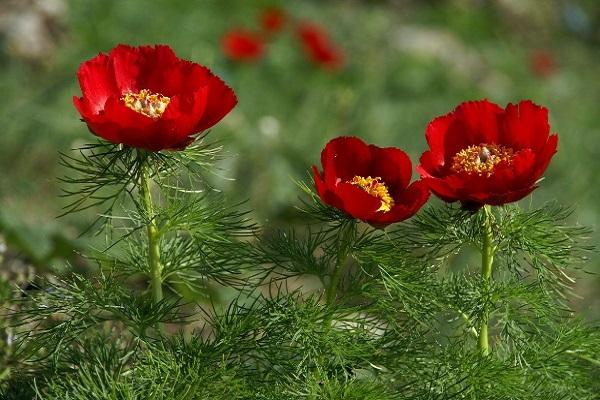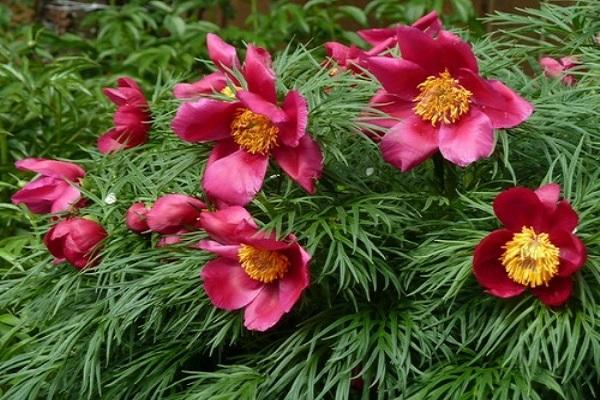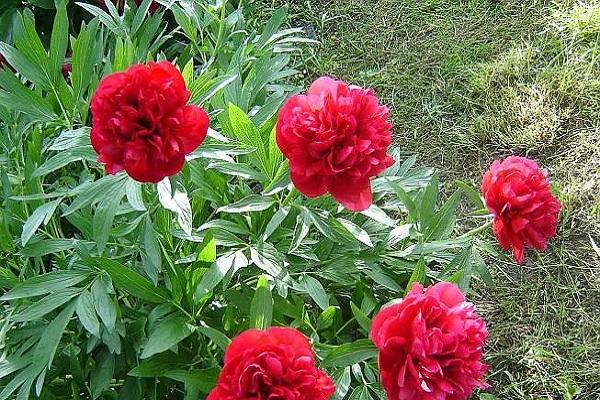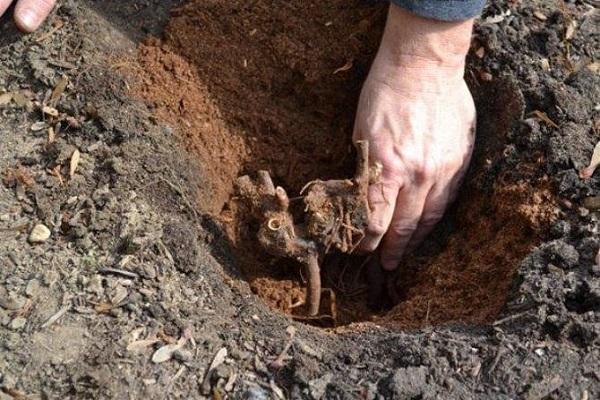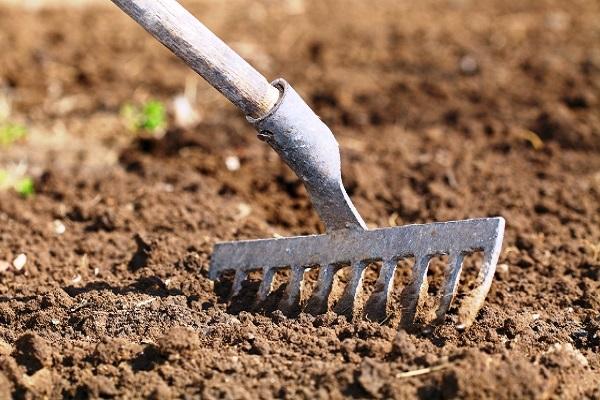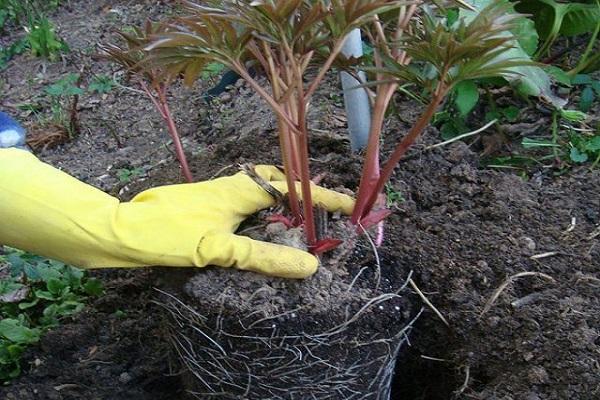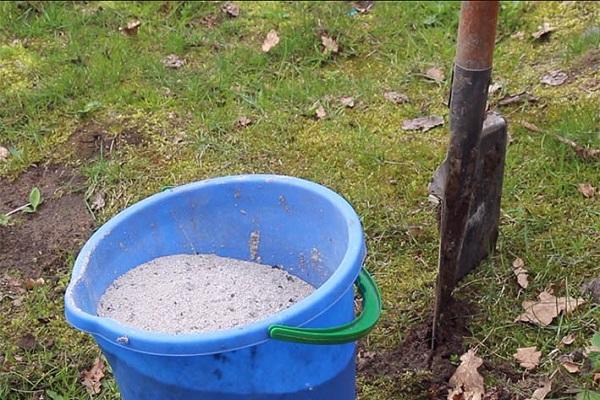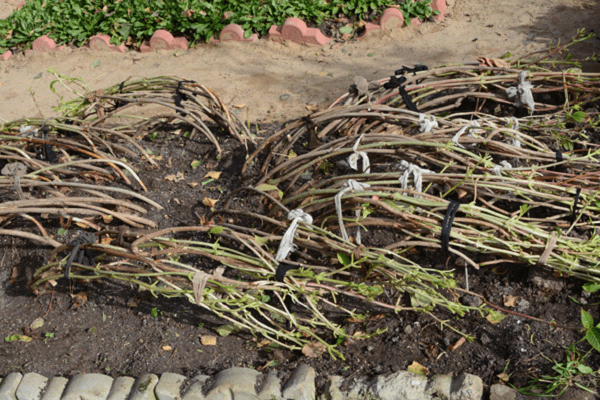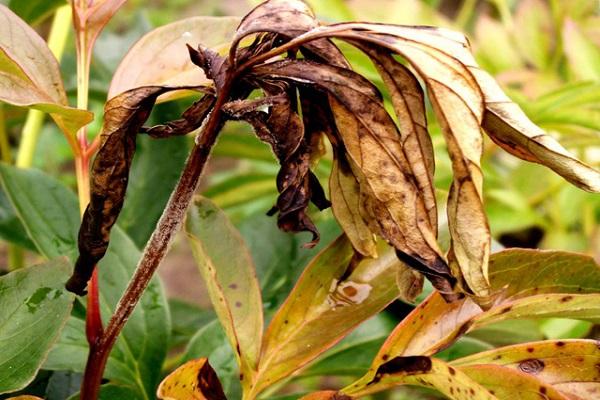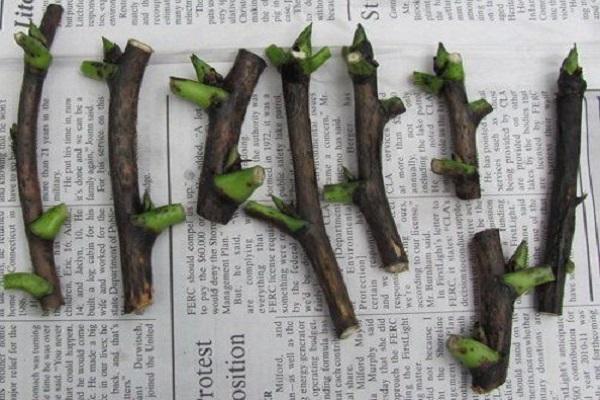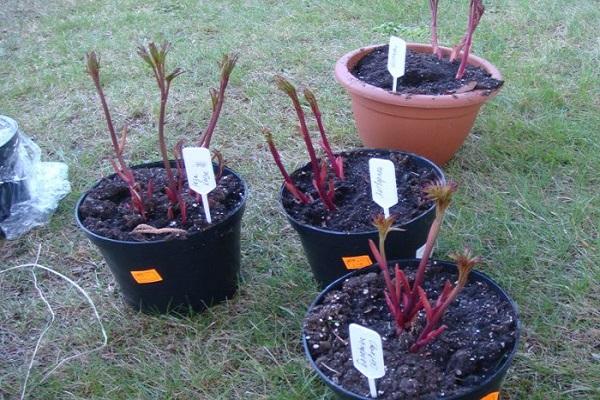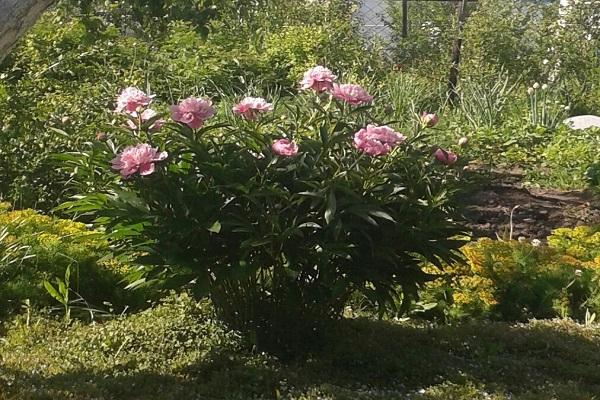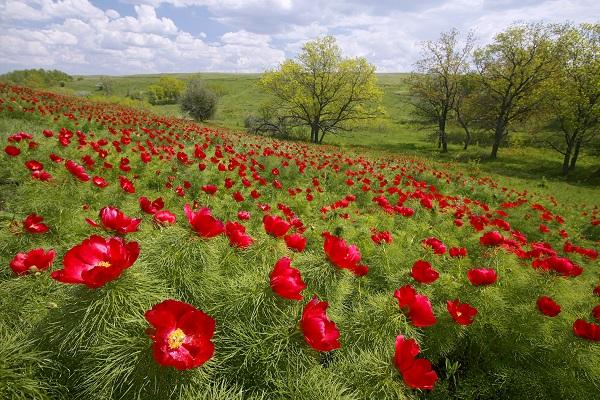Growing fine-leaved peony is a very interesting process that requires strict adherence to the recommendations of experienced gardeners. To get a strong plant, you need to provide it with proper and complete care. To do this, it is recommended to water correctly, apply fertilizers in a timely manner, prune and loosen the plant. Pest and disease control is of no small importance.
- Description and features
- Beneficial features
- Popular varieties
- Rubra plena
- Tiny Tim
- Early Scout
- Eaglet
- Landing
- Selecting a location
- Soil requirements
- Soil preparation
- Deadlines
- Planting scheme
- Care
- Watering
- Top dressing
- Loosening and weeding
- Trimming
- Shelter for the winter
- Diseases and pests
- Reproduction
- Dividing the bush
- Seeds
- Cuttings
- How to plant in winter
- Soil preparation
- How to prepare seeds
- How to plant
- Temperature and light conditions
- Transplantation into peat tablets
- Dive
- Hardening
- Planting in open ground
- Security status
- Reviews from flower growers
- Use in landscape design
Description and features
A narrow-leaved peony that grows in natural conditions is called a crow. Today there are more than 20 varieties of such crops. Breeders managed to develop a terry crop. The plant does not produce seeds, and therefore it can only be propagated by dividing the root system.
Thin-leaved peony reaches a height of 40-60 centimeters. It produces many buds, the diameter of which is 8-10 centimeters. All flowers appear at the same time. Thanks to this, you can admire lush bouquets for 7-10 days.
The perennial plant does not lose its beauty even after flowering has ended. Its thin leaves are similar to a fern and have excellent decorative properties..
Beneficial features
This culture has poisonous properties. However, it is actively used in medicine. This is due to expectorant, analgesic, and bactericidal characteristics. Peony is an effective antispasmodic and helps cope with parasites.
Plant-based substances are often used to combat anemia. They can be used for coughs and syphilis. Peony roots can be used to prepare remedies to eliminate tuberculosis and pathologies of the heart and blood vessels.
The plant contains tanning elements and anthocyanins. It also contains flavonoids, vitamin C, and fatty oil. All these substances are required for the manufacture of medicines. The plant is also valued for its honey-bearing characteristics.
Popular varieties
There are quite a few varieties of this type of peony.Each of them is characterized by certain features.
Rubra plena
This plant has a compact bush that reaches 50 centimeters. Scarlet double flowers are 10 centimeters in diameter. Flowering begins in May. Although the culture does not bloom for long, its decorative properties can be preserved until August.
Tiny Tim
This is a hybrid characterized by carved red petals. Their diameter is 8 centimeters. The crop is characterized by early flowering and the absence of special requirements for the composition of the soil. The plant grows well on rocky soil. It is actively used for rock gardens.
Early Scout
The peony of this variety reaches 50 centimeters in height. The diameter of its flowers is 12 centimeters. The culture is characterized by thin lanceolate leaves of a dark green hue. The bush has an impressive size and retains its decorative properties throughout the warm season. The flowers have a bright red hue and a laconic shape.
The culture is resistant to frost. Therefore, you don’t need to cover it for the winter. The peony begins to bloom in the second half of May.
Eaglet
This variety is characterized by a beautiful bush shape. It has slightly deviated stems and green glossy leaves. The plant reaches a height of 60 centimeters. It is characterized by simple flowers up to 10 centimeters in size. They have a red tint. When exposed to the sun, the petals take on a carmine hue.
Landing
To get a strong and viable plant, you need to choose the right place to plant it and provide it with adequate care.
Selecting a location
The plant grows well in sunny areas. The crop can also be grown in the shade, but in this case it may not bloom.Narrow-leaved peony should not be planted in lowlands, as it has difficulty accepting stagnant liquid. Natural habitats include slopes of ravines and ravines, dense thickets, and forest edges.
The culture goes well with other plants. It can be safely planted near juniper or coniferous trees. The plant also grows well in combination with herbaceous peonies.
Soil requirements
The key requirement for soil is high-quality drainage. It is important that the liquid drains quickly. This will help avoid the development of fungal diseases. The soil should be neutral or slightly alkaline.
Soil preparation
It is recommended to make a hole under the seedling. Its diameter and depth should be 50 centimeters. Drainage is installed at the bottom. It is made from crushed brick, expanded clay or gravel. The height of this layer should be 20 centimeters.
Sprinkle garden soil on top. It is recommended to mix it with compost and humus. You can also use mineral fertilizers and dolomite flour.
Deadlines
It is best to plant a peony in August or September. It is at this moment that the vegetative period of the ground part ends. Thanks to this, the roots of the plot easily take root and do not waste energy on shoots.
When planting, it is not recommended to deepen the plant. It is important that the buds are 3-5 centimeters below the surface of the earth. The plant can also be planted in spring. It will be accepted, but will lag behind in development.
Planting scheme
The peony can be deepened by a maximum of 10 centimeters. After dividing, the bushes should not be immersed more than 3-5 centimeters. Otherwise, they will not be able to fully bloom.
It is important that the root system does not touch the fertilizer layer. After planting is completed, it is worth making an elevation around the plant.Its height should reach 10-12 centimeters. The soil can be replaced with peat or humus. It is prohibited to compact soil in the planting area. This will damage the fragile root system.
Care
In order for the plant to develop fully, it is necessary to provide it with quality care. It must be comprehensive.
Watering
This is a fairly moisture-loving crop that requires systematic soil moisture. In summer, it is recommended to water each seedling at least 3 times a week. At the same time, it is important to remember a sense of proportion. Stagnation of liquid will harm the plant. When watering, you should focus on the appearance of the soil. When it dries, you can water the peony.
Top dressing
When using fertilizers during planting, the crop does not need to be fed in the first 2 years. It is worth applying fertilizers from the third year. In spring, it is recommended to add 50 grams of ammonium nitrate and urea to each bush.
In the summer, it is worth using complex mineral preparations. In autumn, peony needs the use of fertilizers based on potassium and phosphorus. At the same time, excess nitrogen is harmful to the plant - it leads to a decrease in the number of buds.
Loosening and weeding
The soil around the plant should be systematically loosened. Peonies develop well in light and airy soil. The procedure should be carried out very carefully to avoid damage to the root system. It is recommended to loosen the soil near the roots to a depth of 5-7 centimeters. In more distant areas, it is allowed to go deeper by 10 centimeters.
Equally important is the removal of weeds, which lead to the spread of diseases. To reduce the number of waterings and control weeds, gardeners advise mulching the soil.To do this, you can use humus or peat.
Trimming
In autumn the plant should be pruned. It is recommended to do this after the leaves have withered. The bush should be cut down to the root, and then make a layer of peat for the winter.
Shelter for the winter
Peony is resistant to frost. Therefore, it does not need to be covered before winter. But it is important to consider that in case of return frosts the plant may die.
Diseases and pests
Flowers are eaten by ants, caterpillars, and bronze beetles. To repel insects, it is recommended to spray the bushes with hellebore infusion or an insecticidal preparation. Nematodes live on roots. For preventive purposes, the tops should be burned and the soil should be dug up.
Peony may encounter the following diseases:
- Gray rot. To avoid its development, the soil should be weeded and loosened. In early spring, the soil is treated with a fungicide.
- Brown spot. Bordeaux mixture will help cope with it.
Reproduction
Thin-leaved peony can be propagated in various ways. Each of them has some features.
Dividing the bush
This is the most reliable method that rejuvenates adult crops. To do this, you need to separate 2 roots 10 centimeters long and finger thick. They should have 3-4 buds. The plant will quickly take root.
Seeds
Seeds should be planted immediately after ripening. Sprouts will appear next spring or in 1-2 years. Culture propagation is a long process. It takes 5 years from planting seeds to the appearance of flowers.
Cuttings
Peonies can be replanted using root cuttings with a bud. This is done at the end of August or beginning of September. It is worth planting root shoots at a distance of 60-70 centimeters.
How to plant in winter
This peony can be planted in winter.In this case, a number of features should be taken into account.
Soil preparation
The plant requires nutritious fertile soil. It must have a neutral alkaline reaction. It is important to avoid acidic soil.
How to prepare seeds
Purchased seeds quickly lose moisture during long-term storage. The hard shell prevents sprouts from appearing. To facilitate this process, the seeds should be soaked before planting.
How to plant
2 days after soaking, the seeds can be placed in the soil. This can be done in winter. To begin with, pour sand into a wide container. It should be moistened, and then the seeds should be placed in the bowl.
Temperature and light conditions
The container with seeds should be placed on a heating pad. During the day the temperature should be 30 degrees, at night – 15. When the first leaves appear, the seedlings are transferred to a warm and bright place. The temperature should be 18-20 degrees.
Transplantation into peat tablets
When the first roots appear, the seeds can be transplanted into fertile soil. Peat tablets are perfect for this purpose. They contain antibacterial substances and nutrients.
Dive
This procedure is recommended to be carried out when 2-3 leaves appear on the plant. To do this, each sprout is transferred to a separate container.
Hardening
Peonies can be replanted in open ground after hardening. To do this, they should be taken outside for several days.
Planting in open ground
At the end of August or beginning of September, seedlings should be planted in open ground. In the fall, the development of the root system will continue. When grown from seeds, flowers will appear only in 4-5 years.
Security status
Today, group plantings of such peonies can only be found in nature reserves.The plant is listed in the Red Book of Russia. Thin-leaved peonies are found in the foothills of the Caucasus and other places that are not subject to plowing.
Reviews from flower growers
Numerous reviews confirm the excellent decorative properties of thin-leaved peony:
- Anastasia: “I saw this peony from a neighbor in the country and asked her for the roots. This ornamental plant now decorates my plot.”
- Valentina: “I’ve been growing narrow-leaved peonies at my dacha for quite some time. I really like this plant, but it is quite whimsical.”
Use in landscape design
This culture is actively used in landscape design. It goes well with cereals, flax, and broom bushes. The narrow-leaved peony serves as a decoration for alpine slides. Experienced gardeners recommend planting several peonies at once, combining early and late varieties.
Thin-leaved peony is a beautiful plant that is actively used for decorative purposes. To grow a crop, you should strictly follow the recommendations of experienced gardeners.

